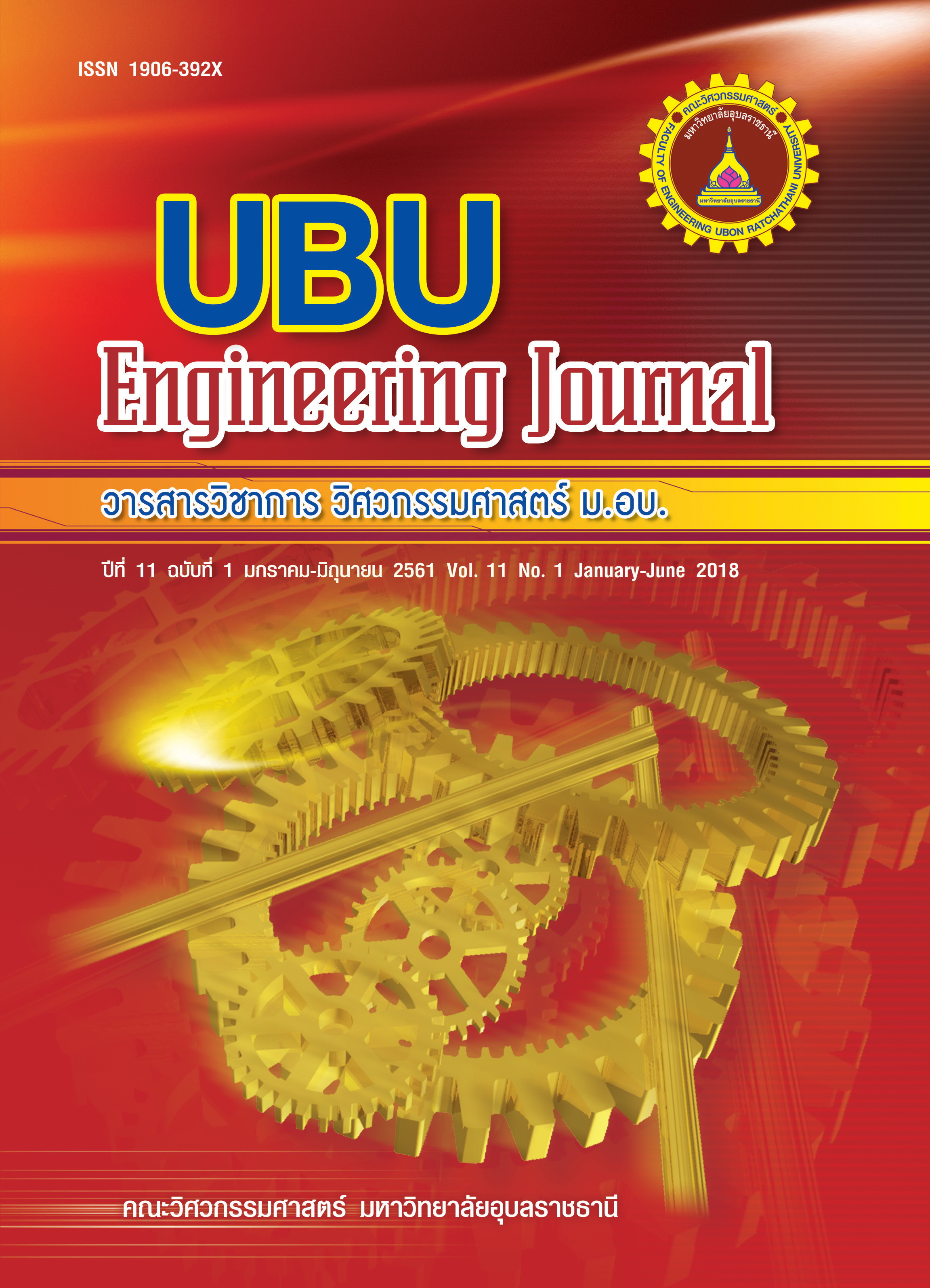การทดสอบทางโครงสร้างของเสาท่อเหล็กหน้าตัดสี่เหลี่ยมจัตุรัสกรอกคอนกรีตมวลเบาแบบเซลลูล่าภายใต้แรงกดอัดในแนวแกน
Main Article Content
Abstract
This research is to reduce the drying time of aluminum rod by using the thermosyphon air pre-heater. The test is to reduced time and energy consumption for dried aluminum system. The thermosyphon heat exchanger was performed using the thermo-economical method. For the optimum system size, it was found that the thermosyphons were made of copper tube with the outside diameter of 19.05 millimeter and 0.8 millimeter wall thickness with a total of 80 tubes when the evaporator section length, adiabatic section length and condenser section length was 300, 10 and 300millimeter, respectively. The working fluid was R-134a, filling ratio was 50% by evaporator section volume. The specimens were made of aluminum tube with the outside diameter of 30 millimeter, 400 millimeter total length and 0.1 kilogram weight per tube with a total of 10 tubes. The experiments were divided to two main parts: one with the conventional system and the other with the thermosyphon heat exchanger. Each main experiment was divided to various sub-experiments that were conducted at the air velocity of 1, 2 and 3 m/s and air temperature of 70, 76 and 80 ºC, respectively. The result was shown that drying time of the thermosyphon heat exchanger system with the air velocity of 1 m/s and the air temperature with 70, 76 and 80 ºC was optimum. The drying time were decreased when compared with conventional system about 13.3, 17.8 and 11.5 %, respectively. Effectiveness of the thermosyphon heat exchanger, counter flow type heat exchanger with the air velocity of 1, 2 and 3 m/s were 33.3 31.8 and 29.6 %, respectively. In addition, the outlet temperature of air which recovers heat from the condenser section of the thermosyphon heat exchanger with the air velocity 1, 2 and 3 m/s, was increased by about 12.2, 11.8 and 10.1 ºC, respectively.
Article Details
References
[2] Dunn P, Reay DA. Heat pipes. Oxford: Pergamon Press; 1982.
[3] Maezawa S. Heat pipe: Its origin, development and present situation. In Proc. of The 6th International Heat Pipe Symposium. Chiang Mai, Thailand; 2000. p. 1−13.
[4] ESDU. Heat Pipes - Performance of Two-phase Closed Thermosyphons. London: IHS ESDU; 1983.
[5] ประดิษฐ์ เทอดทูล. ท่อความร้อน. มหาวิทยาลัยเชียงใหม่; 1993.
[6] ประดิษฐ์ เทอดทูล. การเดือด. มหาวิทยาลัยเชียงใหม่; 1998.
[7] สัมพันธ์ ฤทธิเดช. เทคโนโลยีท่อความร้อน. มหาวิทยาลัยมหาสารคาม; 2010.
[8] Incropera FP, Dewitt DP. Introduction to heat transfer. New York: John Wiley & Sons; 2002.
[9] Soylemez MS. On the optimum heat exchanger sizing for heat recovery. Energy Manage. 2000; 41: 1419−1427.
[10] Soylemez MS. On the thermoeconomical optimization of Heat Pipe Heat Exchanger HPHE for waste heat recovery. Energy Manage. 2003; 44: 2509−2517.
[11] Yeunyongkul P, Sakulchangsajatai P, Terdtoon P. Mathematical Model of the Optimum Heat Pipe Heat Exchanger for a Condenser of Vapor-Compression Refrigeration Cycle. Energy research journal. 2010; 2: 104−110.
[12] Yeunyongkul P, Sakulchangsajatai P, Ghajar AJ. Experimental Investigation of Closed Loop Oscillating Heat Pipe as the Condenser for Vapor Compression Refrigeration. In International Refrigeration and Air Conditioning Conference. Purdue; 2010.

